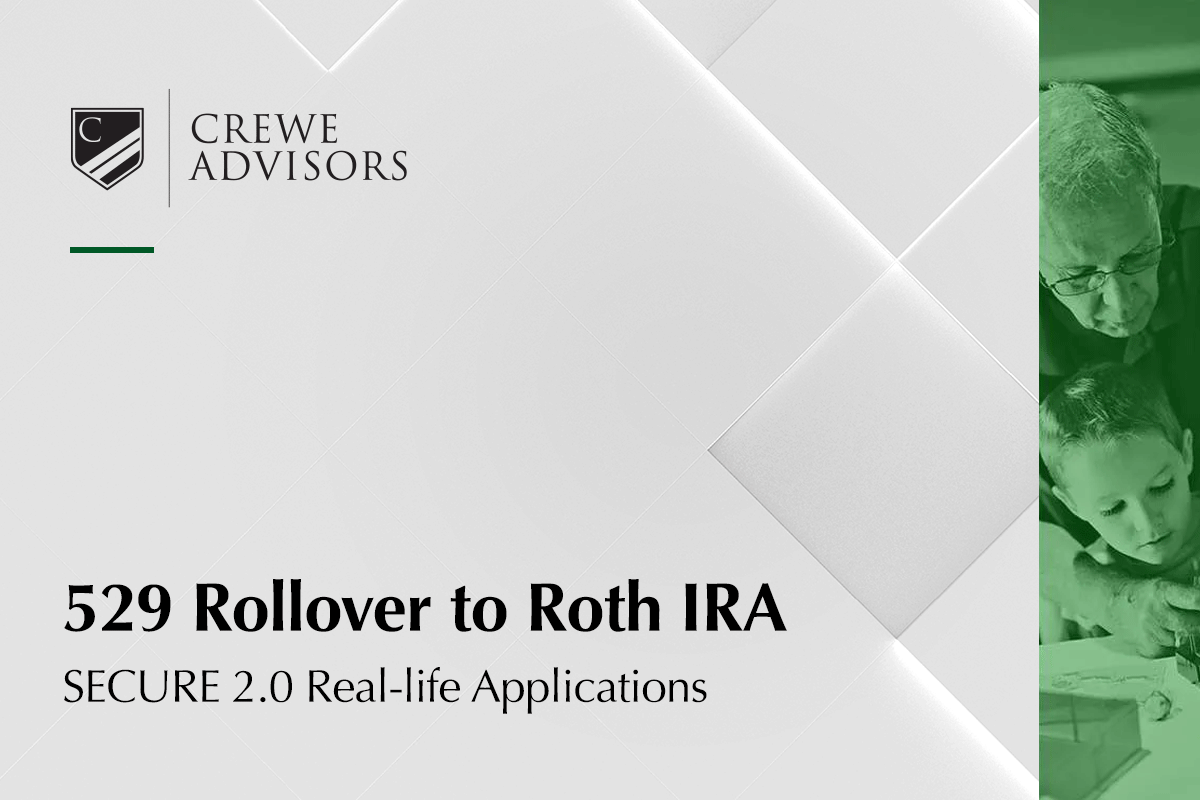While most of the buzz surrounding the passage of SECURE Act 2.0 in late December 2022 was about the dozens of changes it brought to the retirement planning landscape, one lesser known change regarding 529 plans could be helpful to a select group of individuals.
Section 126 of SECURE Act 2.0 has created the new ability for a portion of unused funds in a 529 account to be rolled over into a Roth IRA.
Here are a few important details regarding this new change:
- A 529 to Roth IRA rollover can be done beginning in 2024.
- In order to be eligible, the 529 plan must have been opened/established at least 15 years* prior to the rollover.
- The annual rollover amount is limited to the IRA contribution limit for the year ($6,500 for 2023), net of any other traditional or Roth IRA contributions that were made for the year (g. the account owner of the Roth IRA cannot make additional contributions in excess of the $6,500 threshold).**
- The lifetime maximum amount that may be rolled from a 529 plan into a Roth IRA is $35,000.
- Contributions to the 529 plan that were made within the last 5 years (including earnings on those contributions) are not eligible to be moved to a Roth IRA.
- The beneficiary is not eligible for the rollover if their income is over the Roth IRA phase-out threshold ($153,000 single filing for 2023, Married filing jointly $223,000 for 2023).
Example:
Tom’s grandfather set up a 529 plan for him when he was born. Tom is now 18 years old and enjoying his freshman year of college. In addition to being a full-time student, Tom has a part-time job where he earns $25,000 per year. Tom worked hard in high school and received a partial academic scholarship. Because of this scholarship, some of the money in Tom’s 529 plan will go unused. Tom’s grandfather can roll $6,500 per year out of his 529 plan into a Roth IRA for Tom. Within the next 5 or so years Tom will hit the lifetime rollover limit of $35,000 and no further rollovers may be made, however the money in his Roth IRA will continue to grow tax-free and may be used to supplement his future retirement.
Why does this scenario work?
- The 529 was set up at least 15 years before the rollover.
- Tom has earned income that will substantiate the $6,500 rollover per year.
- Tom’s income is only $25,000 per year, putting him well below the income phase-out threshold for Roth IRAs.
- Tom won’t use the whole amount in the 529 plan for education, therefore the rollover to a retirement account makes sense.
What happens if Tom’s grandfather only rolls over $5,000 per year to the Roth?
If Tom wants to max out his Roth IRA for the year, he can still contribute an additional $1,500 to hit the annual contribution limit.
In Summary
This new rule affects a family’s wealth planning because it now makes a 529 plan less restrictive, by permitting funds that were set aside for education to be repurposed as retirement savings in the case they are not needed for their original purpose. Funds rolled into a Roth IRA could potentially have a long time horizon to grow and be a substantial supplement to a beneficiary’s retirement.
If you are considering whether a 529 Rollover to a Roth IRA makes sense for your family, please reach out to your wealth advisor today to learn more.
*At their core, 529 plans are designed for qualified education expenses. The 15-year rule is in place to ensure that individuals use these funds for their originally intended purpose.
** As is the case with all retirement accounts, the Roth IRA account owner must have earned income of at least $6,500 per year to be eligible for a yearly rollover of $6,500.
